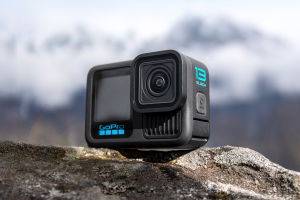
We’ve probably all picked up a pair of binoculars at some point—maybe for birdwatching, hiking, or checking out the night sky.
But how do we know which one to choose, and how can we make sure it stays in great shape for years to come? In this guide, we’ll walk through everything from smart shopping tips to daily care.
How to store binoculars properly
We should always keep our binoculars in a dry, clean, and well-ventilated place. This helps prevent mold from forming on the lenses. If possible, adding a few packets of desiccant nearby and replacing them regularly can really help. Never leave binoculars in damp or dusty spots—it's one of the quickest ways to damage them.
How to clean the lenses safely
If we notice smudges or dirt on the lenses, it’s best to use a professional lens cloth to wipe gently. Scrubbing too hard or using regular tissues may scratch the surface. For a deeper clean, we can use a bit of rubbing solution on a cotton pad. Wipe from the center outward in one direction and switch to a clean pad as needed. The goal is to keep the surface spotless without damaging the delicate coating.
Handle with care—these aren’t toys
Binoculars are precise instruments. Dropping, squeezing, or bumping them can easily knock things out of alignment. And unless we're trained, we should never try to take them apart. It's tempting to peek inside, but doing so might ruin the entire system. Let’s just stick to using them with care and getting professional help if needed.
Choosing the right binoculars: What really matters
When picking binoculars, we usually have to balance image quality and weight. Want something super clear and lightweight? Be prepared to spend a bit more. Each type and size works best in certain settings—there’s no one-size-fits-all solution.
For example, roof prism binoculars are compact but often less bright than porro prism models. Also, don’t assume higher magnification is always better. Too much zoom can lead to image shake and reduced brightness. And let’s avoid those big zoom-range binoculars—they might look cool, but they often distort the view and shift out of alignment easily.
Watch out for fakes and flashy coatings
If we see a "tactical-style" binocular that's too cheap or painted in flashy colors, it's likely not authentic. Real professional ones are often black and come at a premium price. Also, be careful with red-coated lenses—they're made for snowy or high-reflective areas. In normal environments, they make everything look dim and off-color.
Instead, we should look for multi-coated or fully multi-coated lenses, especially with broadband green coating. These offer higher clarity, better color accuracy, and improved light transmission—up to 93% or more in some high-end models!
Understanding lens coatings: What those colors mean
Have you seen binocular lenses reflecting green, blue, or even purple light? That’s due to the coatings. These thin layers help control reflections and boost brightness. The best ones look faint and soft, not shiny. Here's a quick breakdown:
- Coated Optics: Basic. Only some surfaces have a single-layer coating.
- Fully Coated: All lenses and prisms have single-layer coating.
- Multi-Coated: Some surfaces have multi-layer coating.
- Fully Multi-Coated: All surfaces have multi-layer coating—best choice!
broadband green is considered top-tier. Be wary of decorative green coatings though—they look similar but reflect a lot more light and perform poorly.
Why tactical binoculars cost more
While tactical and civilian binoculars might look similar, their build is very different. tactical versions use metal bodies to avoid cracking and handle tough environments. They often come with special lighting features, larger eye relief (for using with masks), and shock protection.
They also go through strict factory tests like vibration, high and low temperatures, and waterproofing. Some even get filled with dry nitrogen to prevent mold. All of this drives up the cost—and for good reason.
One final thought for all curious explorers
Choosing the right pair of binoculars and taking good care of them can make all the difference in your outdoor adventures. A well-maintained pair can last for years, delivering clear, crisp views every time.
We’d love to hear from you, Lykkers! Have you ever used binoculars? What’s your experience with choosing or using them? Share your thoughts with us—we’re always excited to chat and learn from each other!
Everything You Need To Know About Binoculars
Video by GOHUNT


